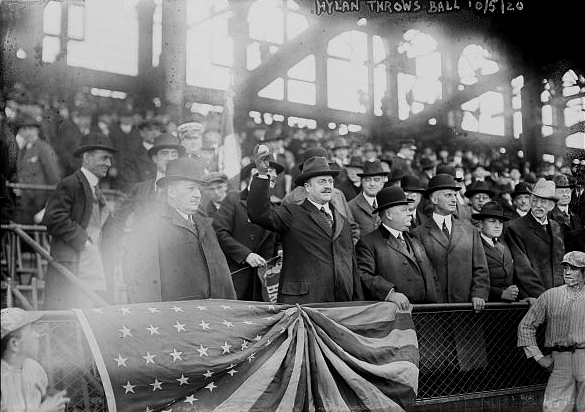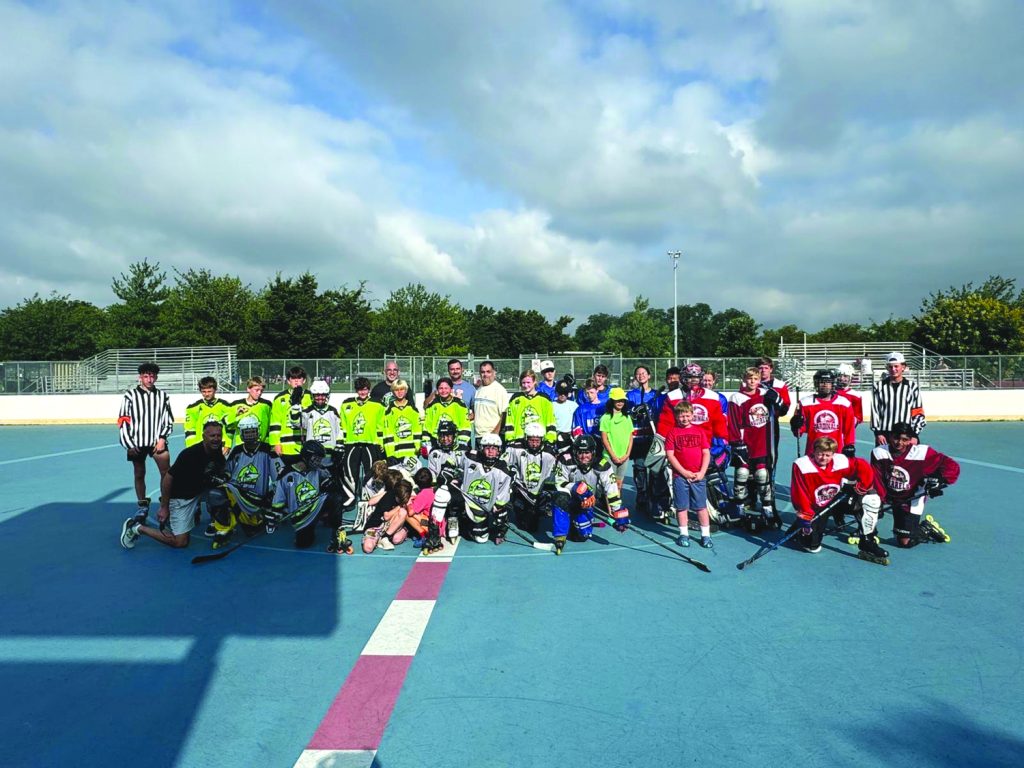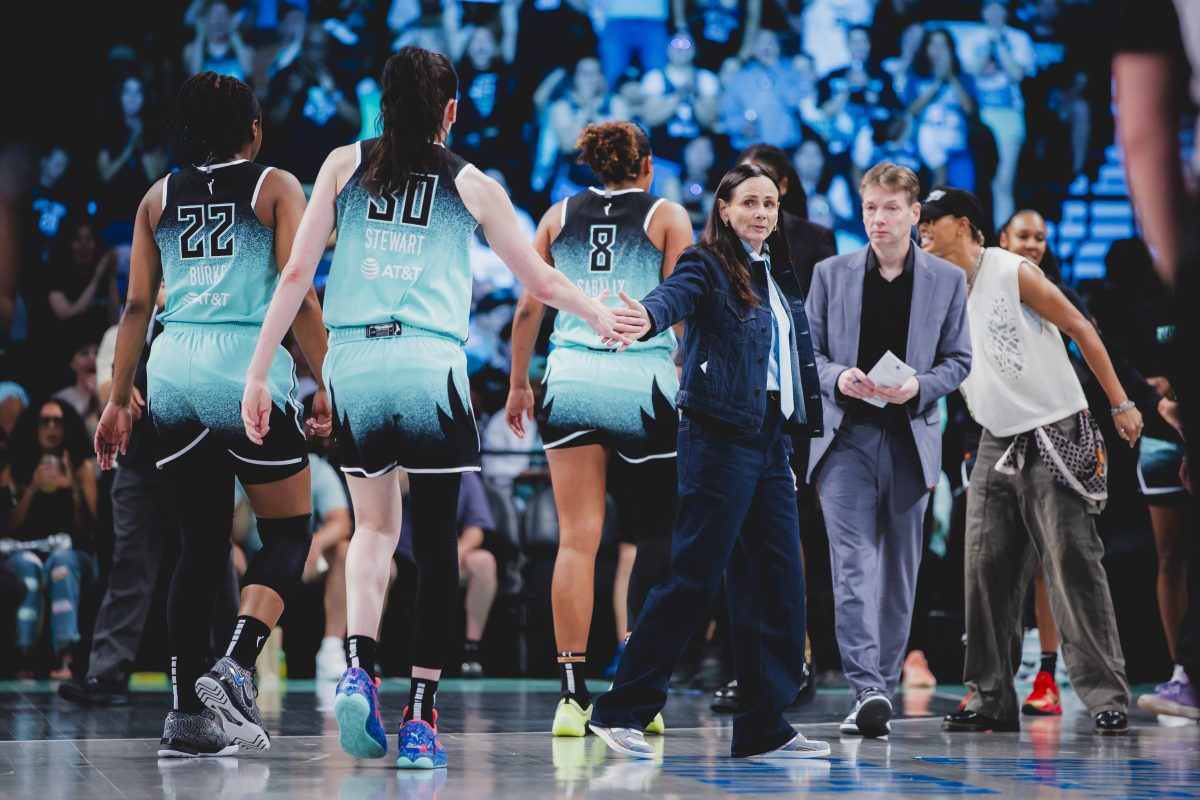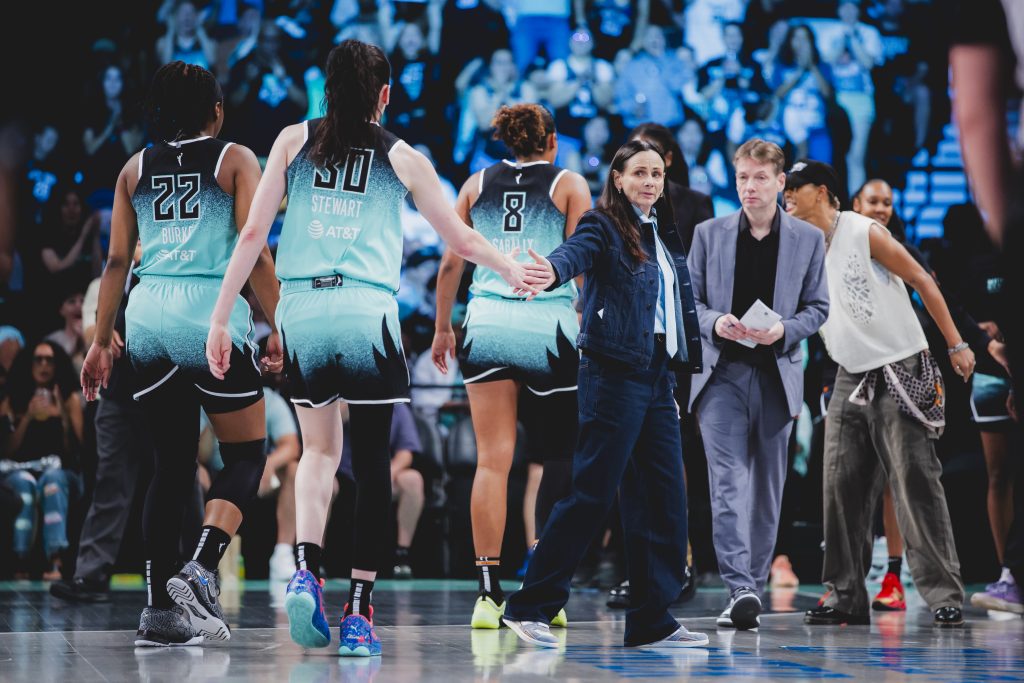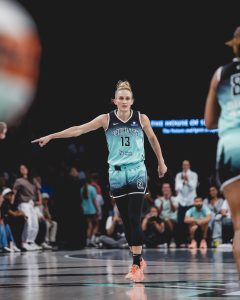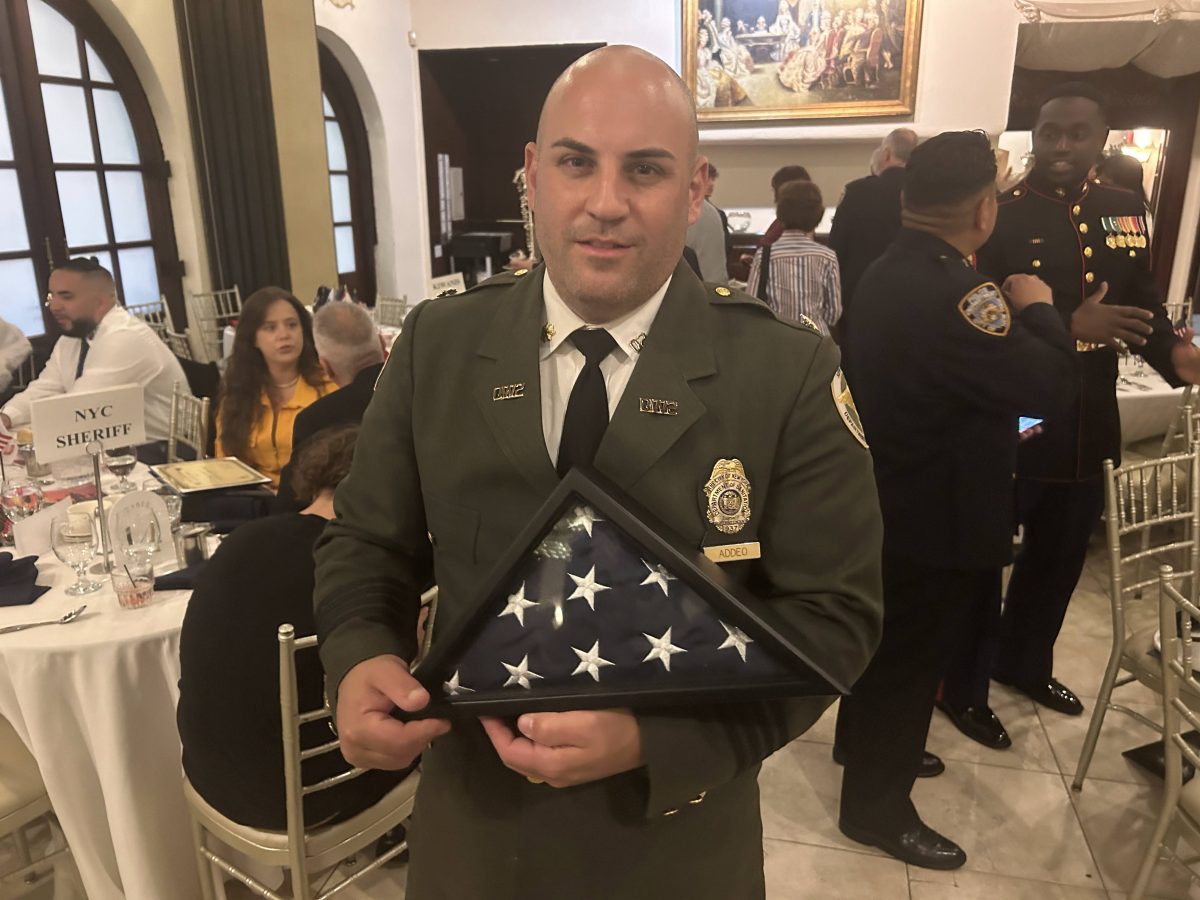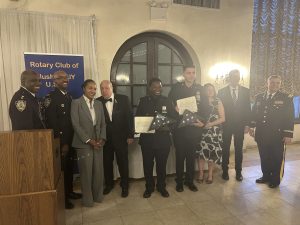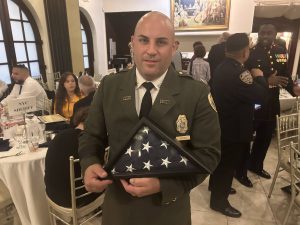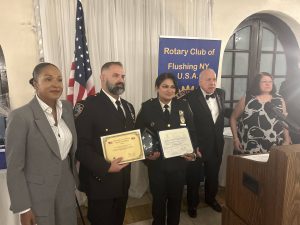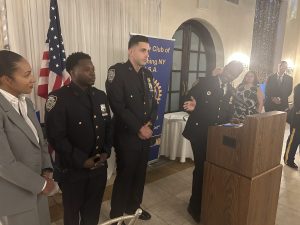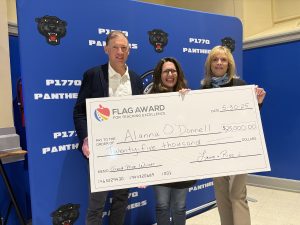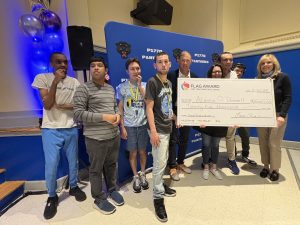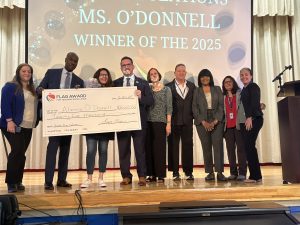The Mayor That Once Lived in Forest Hills

Mayor Hylan throws a ball to open the World Series at Ebbets Field, 1920, Courtesy of Library of Congress, George Grantham Bain Collection.
A Spotlight on Two-Time NYC Mayor John Francis Hylan
By Michael Perlman
With much dialogue underway for what may be the most debated mayoral elections, it is time to take a step back to a century ago, and enter the world of a political figure of Forest Hills. Mayor John Francis Hylan (1868 – 1936) resided in a charming stucco early Spanish/Mediterranean Revival home at 2 Olive Place in Forest Hills Gardens, after serving two terms. A graceful approach from Continental Avenue features a curved planting bed accompanied by three flagstone steps, parallel to the house, erected in 1926. In May 1932, The New Yorker reported that two white light globes were installed in front to symbolize Hylan’s terms in office.
Forest Hills is an extensive cultural breeding ground for notables, whose trades, talents, and personalities are often unique. It is inspirational how an individual raised on a sixty-acre farm in Hunter, Greene County in the Catskill Mountains, and with $3.50 in his pocket, made his way by stage and boat to New York City, and would become the 96th mayor, serving office from 1918 to 1925. Prior to living in Forest Hills, he and his wife, childhood sweetheart Marion Louise O’Hara, made their home in a brownstone at 959 Bushwick Avenue in Brooklyn.

Mayor Hylan on 1924 bronze medal from Democratic National Convention.
In 1921, his mayoral reelection was a success after defeating a fare increase and founding a transit commission to reconfigure a transportation system. He played an integral role in the creation of a subway owned and operated by the public, which would become the Independent Subway System on March 14, 1925. A complete city-operated subway would come to fruition fifteen years later, when the ISS/IND merged with the IRT and BMT.
Backtracking, a young Hylan was employed with the Brooklyn Union Elevated Railroad, which was renamed the Brooklyn Rapid Transit Company (BRT), and operated streetcar trains in Brooklyn and Queens. It later joined forces with the Interborough Rapid Transit System, an early subway system of Manhattan, to launch a dual contract system of unregulated and privately controlled transportation. Hylan’s career path migrated to a lawyer who fought Tammany Hall’s advances, and eventually became their loyal candidate. Hylan pursued his studies at Long Island Business College and New York Law School.

Mayor Hylan & world’s youngewst songwriter & bod-time stories author Betty Gulick open first public school kids automatic savings bank at PS 4, LIC, May 2, 1923.
On March 25, 1919, he tendered the Welcome Home Dinner at the Leading Hotels and Restaurants to the Gallant 27th Division, American Expeditionary Forces with Major-General John F. O’Ryan, “commanding in recognition of their valiant services rendered in the Great World-War of 1914 – 1918.”
The earliest known recording of a New York City mayor dates to the fall of 1921 and can be found on an Okeh Record which is titled “Speech of acceptance on his Renomination for Mayor by Mayor Hylan at City Hall.” It was made available by the General Phonograph Corporation of New York. Hylan focused on the need for home rule, opposing the governor’s appointed transit commission, which he emphasized holds the power to “nullify subway contracts and take away the five-cent fare.” He referenced it as “supreme issues” and advocated for taking away subway leases from the private traction companies. This became a dominant subject on WNYC during its earliest months on air in 1924, and during the first full day of broadcasting at their new studio on July 9, he appeared with Plant and Structures Commissioner Grover A. Whalen. WNYC is regarded as one of the first municipal radio stations, which became a reality during the Hylan administration.

Mayor Hylan’s house, 2 Olive Place, Forest Hills Gardens in a circa 1940 tax photo.
As of 1920, the 19th amendment granted citizens the right to vote regardless of gender. In Hylan’s acceptance speech, he stated, “In the conduct of municipal affairs, the women of this city have been a most potent factor. This administration acknowledges the splendid and efficient service which they have rendered.” Hylan was also respected for his voice in opposition to “the interests,” consisting of international banking and standard oil.
Administration highlights also included erecting and repairing schools and hospitals, securing the city as the healthiest for a newborn, the beginning of the development of the city’s waterfront, and the building and opening of the much-praised Coney Island boardwalk. The Bureau of Fire Investigation originated to work around the clock, as the Fire Department expanded, new alarm systems were implemented. He was also recognized for reducing crime.

Forest Hills firehouse plaque, 1923, featuring Mayor John F. Hylan, Photo by Michael Perlman.
Mayor Hylan would not serve a third term after losing the Democratic primary in September 1925. “I will return to private life with my self-respect unimpaired and my conscience clear,” he graciously stated, which was noted by the Long Island Daily Press and Daily Long Island Farmer. “I take this opportunity to thank the many thousands of men and women who so kindly worked for and loyally supported me on primary day. I return to private life with the satisfaction of having scrupulously lived up to my oath of office.” His vote was reportedly at 154,036, whereas Senator Walker’s was 249,579.

Mayor John Francis Hylan, Produced by Underwood & Underwood Studios.
If one looks closely for signs of Mayor John F. Hylan in Forest Hills, his name is inscribed on a plaque from 1923 at the landmarked Engine Company 305, Hook & Ladder Company 151 firehouse at 111-02 Queens Boulevard. He is commemorated alongside Fire Commissioner Thomas J. Drennan, Deputy Fire Commissioners Joseph M. Hannon and William F. Thompson, Chief of Department John Kenlon, Deputy Chief, Brooklyn & Queens John O’ Hara, and Chief of Bureau of Repairs & Supplies Hubert J. Treacy.
Hylan was active in community affairs as a judge at the Forest Hills lady popularity contest in 1930 at the Forest Hills Theatre, which featured Agnes Geraghty of Olympic swimming fame and musical comedy star Dorothy Stone. In the early 1930s, he served as Justice of the Queens Children’s Court at $17,500 annually. He was also a family man, with three grandchildren, and with civic matters in his heart, composed a history of New York.

Mayor John Francis Hylan, March 25, 1919, Welcome Home Dinner.
Hylan’s Forest Hills Gardens home was designed and erected by the significant Manhattan-based firm Patterson & Willcox for an estimated $35,000. The architectural plans were revised in accordance with the planned garden community’s restrictive covenants. On August 20, 1926, The Daily Star referenced its distinctive style and 14 rooms, and an unusual half-story as part of the basement, whereas the majority of homes of this nature would feature a half-story atop. An excerpt read, “The dining and living rooms will be ceilings with huge rafters, similar to those found in the Spanish mission type of home. Three huge stone fireplaces with decorative mantels will be installed. One will be placed in the living room, and the third in the basement. The fireplace chimney is exposed on the outside of the house and forms one of the decorative features of the architecture.”
At the time of his passing in 1936, the Associated Press reported, “Mayor Fiorello H. La Guardia ordered flags on all public buildings lowered to half-staff and instructed Police Commissioner Valentine to mobilize a uniformed escort for the funeral.” His final resting place is at St. John Cemetery in Middle Village. In 1939, a portrait of Hylan, which was painted by Peconic resident Irving Ramsey Wiles and presented by his nine-year-old granddaughter Norma Jean Sinnott, was displayed in a reception area that led to Mayor La Guardia’s office.

Hylan’s homestead from his autobiography, 1922.
Today, Hylan’s spirit comes alive as New Yorkers and tourists alike take the subway or travel along Hylan Boulevard in Staten Island, a renaming that became official in 1923. Enthusiasts can also spend an afternoon in the 15-acre Hylan Park in the Bronx, which was named by NYC Parks Commissioner Stern in 1987. Another honorary property is Brooklyn’s John F. Hylan Public School.
The spirit of Hylan’s voice resonates if one were to pick up a copy of “Mayor Hylan of New York: An Autobiography” (1922). He advised “to never be afraid of hard work” and wrote, “A boy should never decline to perform a task which will make things easier for another. In order to succeed, one cannot be selfish. If you make rosy the path for another, your own path, beyond any doubt, will be bright. The lesson involved in this message applies equally to rich and poor, to the city lad as well as to the farmer’s son.”

Mayor Hylan’s Forest Hills Gardens home, April 4, 2019 photo by Michael Perlman.
Mayor Hylan memorabilia can occasionally be acquired on eBay, such as a 1924 tennis men’s double sterling medal, a 1922 Safe & Sane Fourth of July Athletic Celebration gold medal, a 1919 WWI Welcome Home Dinner menu, and his portrait alongside the Statue of Liberty and The Municipal Building on a 1924 bronze medal from the Democratic National Convention. He also appears in numerous news photos that capture significant events.

Mayor Hylan on 1924 bronze medal from Democratic National Convention, back.


